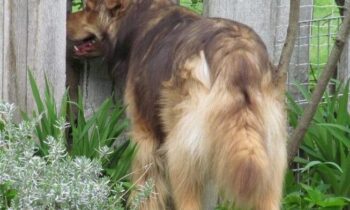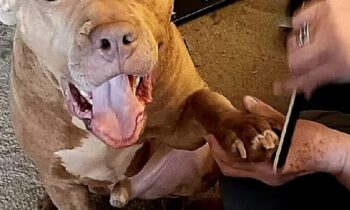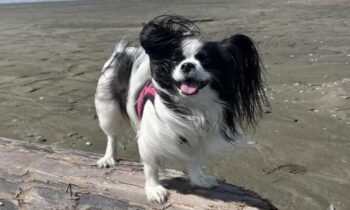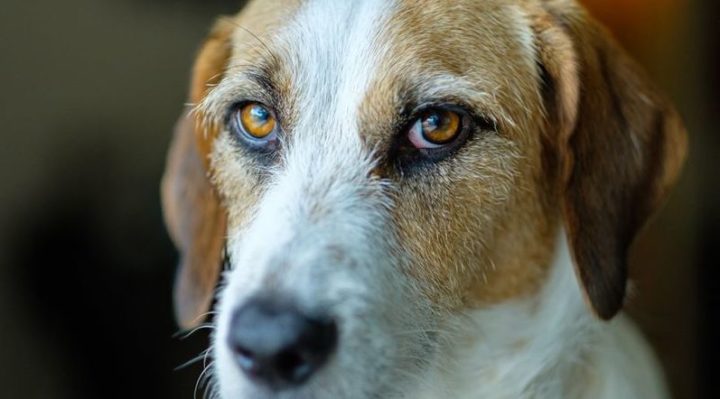
When you’re a young person looking ahead, it’s hard to imagine that some day, when you’ve achieved success in your chosen career, you might be in a position to mentor someone . . . well, someone like you now—someone who’s just starting to figure it all out. When you’re a young person who’s considering the possibilities of a career working with animals, finding a mentor can be critical.
I asked animal professionals about their mentors. Where did they meet, what did they learn? I encouraged those who responded to talk, too, about how their mentors have affected their own careers, in the long run. How have the mentees benefitted from the guidance of their mentors?
Can having a mentor be both life-affirming and heartbreaking? It was for Dr. Kingery.
Summer Storm Kingery DVM (North Carolina) Dr. Sophia Yin, who was a veterinarian, because she spoke up about doing things better in a profession that tends to be defensive and punitive. Bittersweet, because she also died of suicide.
I met her when I was in college. We were at a Wolf Park seminar together. She was still getting her feet under her then as a doctor/behaviorist. I was interning in zoos, working on conservation education. But I had a decade of training under my belt already and had recently switched fully to clicker training. Our paths crossed dozens of time after that, and at one seminar I was griping about how veterinarians didn’t take me seriously, researchers didn’t either, and I felt limited in training because I couldn’t do what I wanted. She sat me down and said it was time. I argued, I complained that I couldn’t afford it, didn’t have the resources, was too busy. She told me I could do what I needed to do to get where I needed to be, or we could have this conversation again in five years. I did what I needed to do, I got where I needed to be. We had only two brief meet-ups in those five years, and then she was gone and I was so upset and angry.
The greatest thing about Dr. Yin was she made the changes for herself first, then demonstrated what she could do, and influenced others from that space. She was also very practical. She didn’t talk about behavior just from the perspective of benefiting the patient, she focused on the benefit to the client, to the tech, to the vet, and to the practice owner. She was very comprehensive in what she addressed. She could see both the details of the problems and the entirety at the same time. I fear she underestimated the impact she was having.
I wrote a piece about her passing.
https://www.abettervet.com/dear-dr-yin-i-understand-and-i-will-miss-you/
Trish McMillan (North Carolina) Dr. Yin was also super kind to me when I was looking into grad school in animal behavior. I took her out to lunch, picked her brain, and left with a list of the prerequisite courses I’d need to upgrade my BFA to something I could get into grad school with. She remembered me many years later when I asked to use some of her material in a presentation! I got my master’s degree and try to pay forward her kindness whenever people ask me about career paths. I am just devastated she left us too soon. Dr. Yin definitely changed the animal world for the better.
When you think you know where your career is heading, then you meet new mentors, the result can be surprising. Alicea Howell’s about-face began with a required class.
Alicea Howell (Michigan) Karen Pryor, Kathy Sdao, and Julie Shaw. When I went to tech school at Purdue, I was 100% sure when I graduated I would go into emergency and critical care. Much to my dismay, I was forced by Purdue University to take a morning behavior class. I thought for sure I would hate this class and it would be about dominance and heavy hands to show dogs who’s the boss. Well, as you can imagine, both Andrew Leuscher and Julie Shaw had other methods of changing behavior, and I was immediately hooked on the psychology of it all. Julie Shaw also was the first person to put a clicker in my hands and teach me to use it. Karen Pryor at first I knew only as an author, but she easily engaged me in learning both through her books and later through her lectures at Clicker Expo. Kathy Sdao was the first person I heard speak after graduating at Purdue, at a Clicker Expo in Philly in 2004. Her excitement about learning theory and cueing really brought out the nerd in me. I am VTS in Behavior and own my own training center.
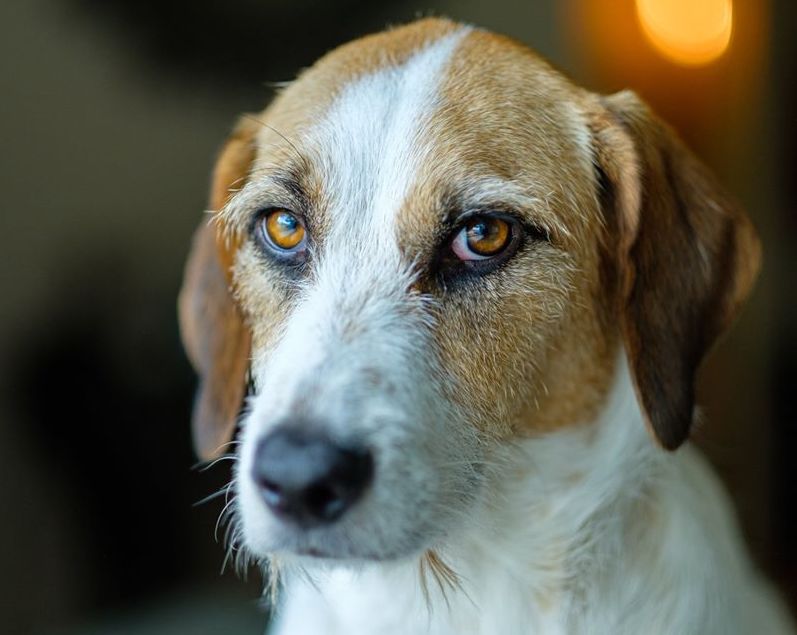

Photo by Steven Cogswell
Morgan Spector (California) Bob and Marian Bailey. They brought the 30-year experience of Animal Behavior Enterprises to me and dog trainers generally. They gave me lessons and understandings that have stayed with me to this day. Just in a nutshell, Marian (Maus) was the theoretician; she had her Ph.D. in Behavioral Studies and understood behaviorism upside down and backwards. She was, after all, one of B.F. Skinner’s first graduate students, along with her first husband Keller Breland. They worked with Skinner on animal projects during WWII. After WWII, they decided that commercial animal training could be a business, so they formed Animal Behavior Enterprises. Bob came on board in the early 1960s after getting his degree in biology (he used to collect rattlesnakes for meat up here in the Antelope Valley to help pay his way through grad school.) I got to know them in the 1990s on one of the early clicker-training boards. They invited me to join them in working with Canine Companions for Independence (CCI) on operant conditioning for service dogs. (CCI dropped the project after the grant funding ran out.) After that I kept contact with Bob and we did some chicken and chicken/dog seminars until the complications in my personal life pretty much put me on the shelf. Bob still does seminars here and abroad. I have not done much of anything for several years, though I have complete recall of everything they taught me and can bring it to the fore at any time. I can only say this: Bob and Maus taught me to believe in operant and the practical knowledge of using it. I haven’t forgotten any of that. Training is a mechanical skill; it is easy but not simple. Wish I were 30 years younger!
Annie Zeck (Washington) Sue Sternberg! I dealt with a lot of shelter-dog owners and also a lot of aggressive dogs (some slight overlap but not much). Sue’s lectures, videos, shelter sessions kept me and my clients safe. I can think of no greater gift.
Cindy Bennett Martin (Arkansas) Alexandra Kurland, first and foremost. All the other influencers are because of her.
Jamie Robinson (Arizona) Roger Abrantes because he looks at the whole animal including evolution, ethology, and behavior.
Lori Katz (California) Trish King, Sue Sternberg
Jodie Miller (Hawaii) Bonnie Bergin
Ann Watt (United Kingdom) Nina Bondarenko, with no doubt.
Marla Cooper (California) Bob Bailey, Susan Garrett, and Jean Donaldson.
Joan E. DeNeffe (California) Pat Miller and Mardi Richmond, along with Trish King and many others. So lucky.
Jennifer Bristol (New York) Trish McMillan, for sure! While I worked at a old-fashioned no-kill shelter, she opened my eyes to modern adoption processes, to trusting adopters, and so many other things! Plus all the behavior stuff!
Gwen Jones (California) It was a book written by Vicki Hearne—“Adam’s Task: Calling Animals By Name.” I was very new at dog training but had worked with horses for years, Her book taught me to look at the animal in front of me, not the animal I imagined it could be.
Carol Byrnes (Washington) I would not be the trainer I am today without Terry Ryan. She—gently and without judgment—guided and inspired me as I transitioned as a cross-over trainer from traditional correction-based training to positive dog- and people-friendly training methods. Her very first training camps were in Moscow, Idaho, where she brought the best of the best to teach us. I will be forever grateful for her inspiration and example.
Cherie River Maitland (California) 1990s: My two primary awesome teachers/mentors were Karrin Hoban, DVM, and Barb DeGroot of From the Heart Dog Training— both from the Monterey Bay area. I studied a lot of Patricia McConnell’s videos and books, attended numerous workshops at the Marin Humane Society, and also was friends with and learned from David who was a student of Pat Miller at the Santa Cruz SPCA. The whys? Dr. Hoban because she was my vet. Also, I learned about animal behavior from people who were teaching equine training—understanding the perspective of the horse—and that’s how I started working with Karrin, because she did the same thing with dogs. Barb, because she was using a humane approach to dog training and I loved picking her brain about all that she knew. She allowed me to assist with her puppy training classes. Patricia McConnell because of her work with aggressive dogs. She loved border collies and I never read or saw anything that she put out that didn’t make total sense and it all worked.
Joyce Kesling (Florida) Dr. Myrna Milani—she’s a veterinary ethologist. Dr. Ian Dunbar, whom I saw at seminars several times. Ray Coppinger, whose book “Dogs” taught me a lot. I met him at Wolf Park in 2005. Steven Lindsay through his three-volume textbook. Roger Abrantes. Really, too many experts/authors to name. Many I saw in person or read their books and published papers. I help people understand their dog as a dog, not a “fur baby.” I was a bit confused with all the science, psychology, biology, domestication, evolution, and learning theory. I did a private weekend seminar with Myrna Milani, then semi-private, then a large seminar later, hosted by a trainer in Georgia. There’s so much to learn when one wants to specialize in behavior. For me, I cannot ignore how dogs respond during training. I also believe that when we fully understand how animals behave naturally, we’re better equipped to think preventively, breeding and raising them so they successfully adapt to living with us. And I never forget: context is everything.
Sherry Al-Mufti (California) It was Karen Pryor and Ian Dunbar who started me on the journey to the kind of trainer I am now. For decades, I trained successfully using the methods we knew at the time. Then I read “Don’t Shoot the Dog.” Around the same time Ian Dunbar, who is local to me, was gaining notice, and I began to try some of his ideas. In the 1990s, I attended one of Karen Pryor’s first seminars when she presented here in the Bay Area. I began to try to incorporate the new principles and techniques into my training.
Since then, two of the most influential people in my development as a trainer have been Bob Bailey and Dr. Susan Friedman. I have taken all five of Bob’s chicken-training workshops, and later I went back and repeated two of them. I have taken Susan’s online course, and try never to miss an opportunity to learn from her.
I am a professional dog trainer in the San Francisco Bay Area, and my business name is The Polished Pup. I work with clients and their dogs on new-puppy training, manners training for older dogs, trick training, and behavior modification. As I see it, my job really is to work with both humans and dogs to create relationships built on communication and trust. In the behavior-modification area, I especially enjoy working with fearfulness and fear-based behaviors. When we can solve the fear by helping dogs to feel better about what worries them, the dogs’ quality of life improves in so many ways, and as their behavior improves, so does the quality of life of the humans they live with.
What did all of these animal professionals have in common? In the beginning, an interest in animals and an interest in learning. They read the books, studied the science, watched the videos, learned online. They attended the classes, signed up for the seminars, and saved up for the training camps. They paid for their educations with hard work and late nights.
What did all of their mentors have in common?
Their mentors had done the exact same things!
Next week, more about mentors from animal professionals.

